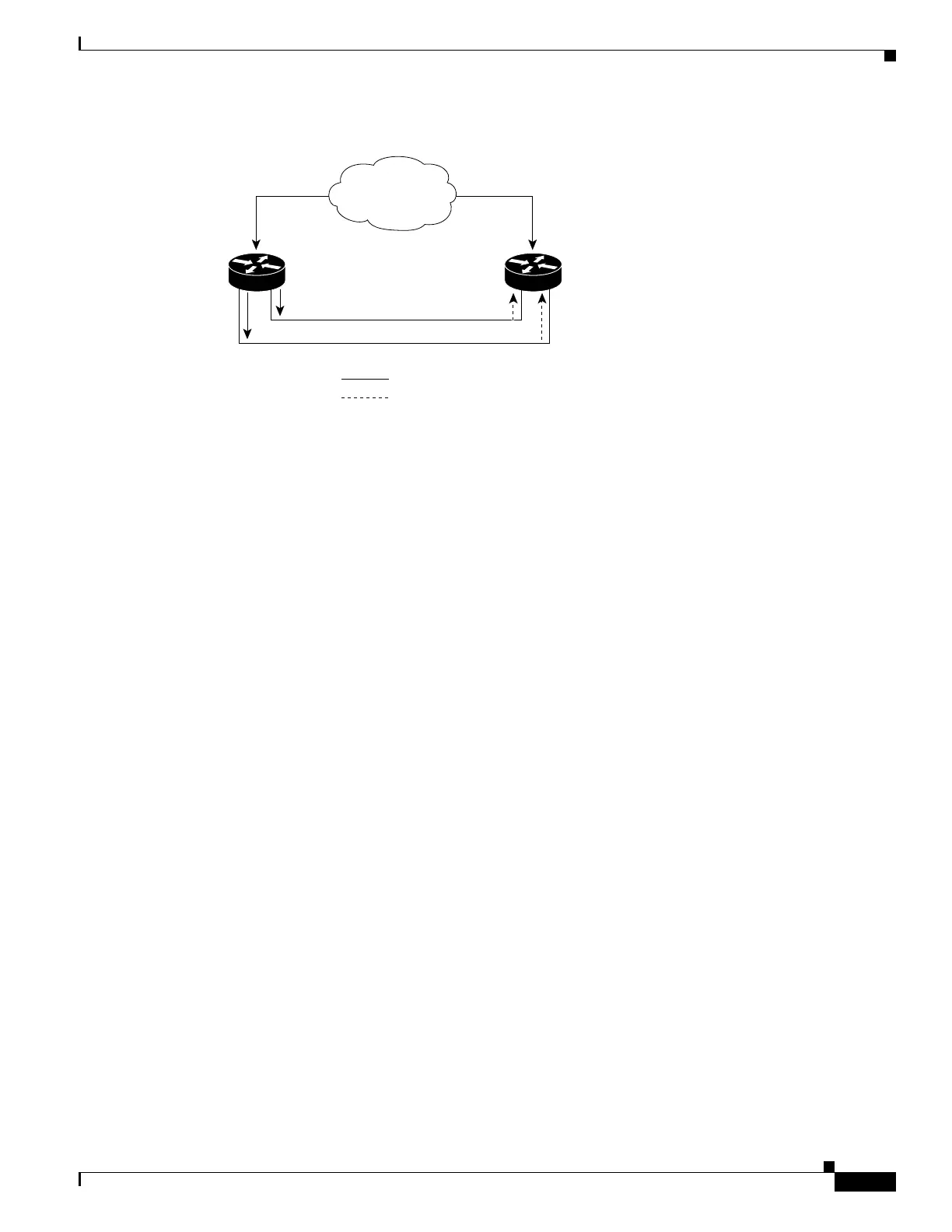38-11
Catalyst 4500 Series Switch, Cisco IOS Software Configuration Guide - Cisco IOS XE 3.9.xE and IOS 15.2(5)Ex
Chapter 38 Configuring IP Multicast
About IP Multicast
Figure 38-6 Redundant Multicast Router Configuration in a Stub Network
In this kind of topology, only Router A, the PIM designated router (PIM DR), forwards data to the
common VLAN. Router B receives the forwarded multicast traffic, but must drop this traffic because it
has arrived on the wrong interface and fails the RPF check. Traffic that fails the RPF check is called
non-RPF traffic.
Multicast Fast Drop
In IP multicast protocols, such as PIM-SM and PIM-DM, every (S,G) or (*,G) route has an incoming
interface associated with it. This interface is referred to as the reverse path forwarding interface. In some
cases, when a packet arrives on an interface other than the expected RPF interface, the packet must be
forwarded to the CPU subsystem software to allow PIM to perform special protocol processing on the
packet. One example of this special protocol processing that PIM performs is the PIM Assert protocol.
By default, the Integrated Switching Engine hardware sends all packets that arrive on a non-RPF
interface to the CPU subsystem software. However, processing in software is not necessary in many
cases, because these non-RPF packets are often not needed by the multicast routing protocols. The
problem is that if no action is taken, the non-RPF packets that are sent to the software can overwhelm
the CPU.
Prior to Release IOS XE 3.3.0SG and IOS 15.1(1)SG, to prevent this situation from happening, the CPU
subsystem software would load fast-drop entries in the hardware when it receives an RPF failed packet
that is not needed by the PIM protocols running on the switch. Any packet matching a fast-drop entry
would be bridged in the ingress VLAN, but is not sent to the software so the CPU subsystem is not
overloaded by processing these RPF failures unnecessarily. However, this process involved maintaining
fast-drop entries in hardware. Because the FLCAM space is limited, the number of fast-drop entries
installed in hardware was also limited.
Beginning with Release IOS XE 3.3.0SG and IOS 15.1(1)SG, rather than installing fast-drop entries,
your switch uses Dynamic Buffer Limiting (DBL). This flow-based congestion avoidance mechanism
provides active queue management by tracking the queue length for each traffic flow. When the queue
length of a flow exceeds its set limit, DBL drops packets. Rate DBL limits the non-rpf traffic to the cpu
subsystem so that the CPU is not overwhelmed. The packets are rate limited per flow to the CPU.
Because installing fast-drop entries in the CAM is inaccessibly, the number of fast-drop flows that can
be handled by the switch need not be limited.
Router A Router B
Network A
Network B
Multicast Traffic
Non-RPF Traffic
68331

